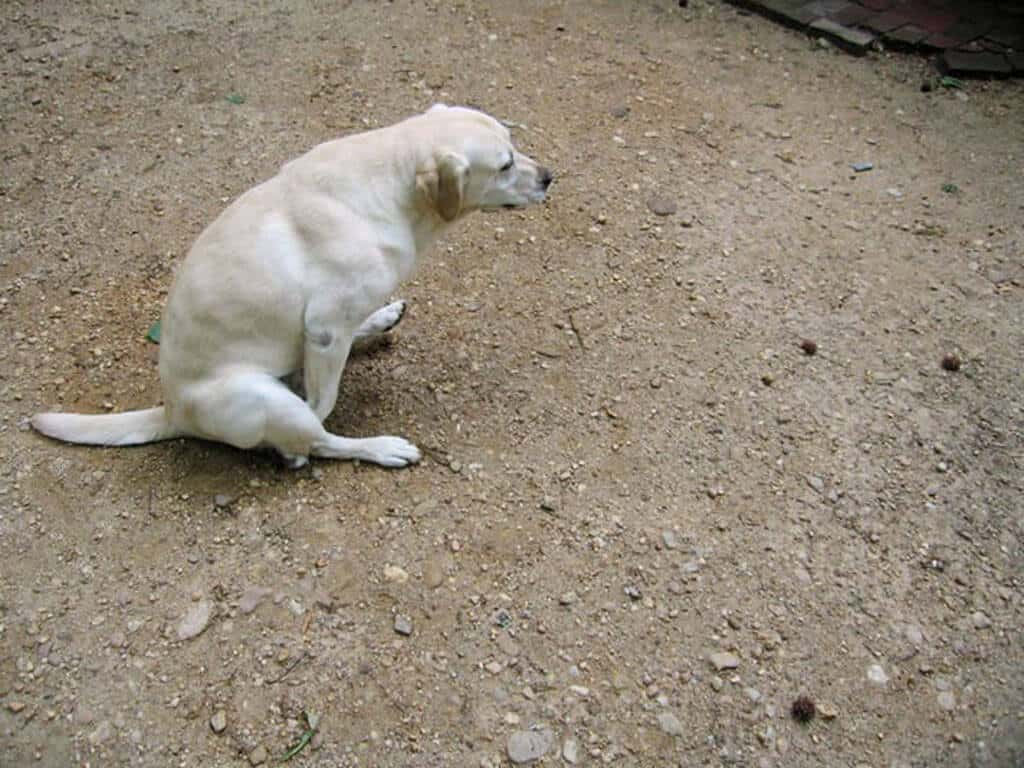The sight of your beloved furry friend dragging their rear end across the floor can be a hilarious and embarrassing spectacle. However, behind the comedic act, there are often underlying medical conditions or simple hygiene issues that require attention. Witnessing this behavior can be concerning, leaving you wondering why your dog is engaging in such an unusual act. This article aims to shed light on the various reasons behind this behavior, offering insights into potential causes and solutions.

Image: viewfloor.co
One morning, I woke to the sound of a distinct dragging noise coming from the living room. I rushed out, only to discover my furry friend, Bailey, dragging his bum across the carpet, leaving an unsightly trail. While I chuckled at the sight, a sense of concern quickly replaced my amusement as I realized something was amiss. It turned out Bailey had succumbed to a case of anal gland impaction. This experience sparked my interest in understanding the various reasons behind this seemingly bizarre behavior and how to effectively address it.
Understanding the ‘Scooting’ Phenomenon
The act of a dog dragging its bottom on the floor is often referred to as ‘scooting’ or ‘bum-dragging’. This behavior typically occurs when a dog experiences discomfort or irritation in their anal area, prompting them to rub their rear end against surfaces to alleviate the unpleasant sensation. While many dog owners find this behavior amusing, it can signal a variety of health issues. Understanding the primary causes behind ‘scooting’ is crucial for determining the appropriate course of action.
The most common culprits behind this behavior include:
- Anal gland impaction: Anal glands are small sacs located on either side of a dog’s anus. These glands secrete a foul-smelling fluid responsible for marking territory and communication. When these glands become impacted, they can cause discomfort and pain, leading to scooting.
- Parasites: Intestinal parasites such as roundworms, whipworms, or tapeworms can irritate the anal area, causing your dog to scoot.
- Allergies: Allergic reactions to food, flea bites, or environmental allergens can cause itching and inflammation in the anal region, leading to scooting.
- Irritated skin: Dry skin, eczema, or other skin conditions can also cause your dog to scoot.
- Fecal impaction: A buildup of hardened stool in the rectum can also lead to discomfort and scooting.
- Trauma or injury: A recent trauma or injury to the anal area can also cause pain and irritation, prompting your dog to scoot.
Identifying the Underlying Cause
The first step in addressing a dog’s scooting behavior is to determine the underlying cause. This often requires a visit to a veterinarian for a thorough examination. The veterinarian will likely perform a physical exam, including a rectal examination, to assess the anal glands and rule out any signs of infection or inflammation. They may also recommend fecal tests to detect parasites and blood tests to assess overall health.
Depending on the suspected cause, your veterinarian may recommend a range of treatments, including:
- Anal gland expression: This is a common treatment for anal gland impaction. The veterinarian will manually express the contents of the anal glands, relieving the pressure and discomfort.
- Antibiotics: If an infection is present, antibiotics may be prescribed to treat the infection.
- Deworming medication: If parasites are detected, deworming medications will be administered.
- Anti-inflammatory medication: To reduce inflammation and discomfort, your veterinarian may prescribe anti-inflammatory medications.
- Prescription diet: If allergies are suspected, your veterinarian may recommend a hypoallergenic diet.
- Skin treatments: For skin conditions, topical treatments like medicated shampoos or creams may be necessary.
Preventing Scooting in Dogs
While some cases of scooting may require veterinary intervention, there are preventive measures you can take to minimize the occurrence of this behavior in your dog. Regular anal gland expression, especially if your dog has a history of impaction, can help prevent the build-up of fluid and reduce the risk of discomfort.
Maintaining a healthy diet that is appropriate for your dog’s breed and activity level can also contribute to overall digestive health, reducing the chances of constipation or fecal impaction. Regular deworming, as recommended by your veterinarian, is crucial for preventing parasites that can cause anal irritation. Additionally, monitoring your dog for any changes in their behavior, such as excessive licking or scratching around the anal area, can help catch potential issues early on.

Image: www.articlesvally.com
Expert Advice
As a dog owner, it’s essential to pay attention to your pet’s body language and any unusual behaviors they exhibit. Scooting is a clear indication that something isn’t right. Don’t hesitate to consult your veterinarian if your dog is constantly dragging its bum on the floor. Early detection and treatment are vital in preventing complications and ensuring your dog’s overall health and well-being.
Remember, the information provided in this article is intended for general educational purposes and should not be construed as professional medical advice. It’s always recommended to consult a qualified veterinarian for accurate diagnosis and treatment recommendations for your dog.
FAQ:
Q: Can I express my dog’s anal glands myself?
A: It’s not recommended to express your dog’s anal glands yourself unless you have received proper training from a veterinarian or groomer. Improper techniques can cause injury or pain to your dog.
Q: How often should I have my dog’s anal glands expressed?
A: Depending on your dog’s breed, body type, and diet, anal glands may need to be expressed every few months or even more frequently. Your veterinarian can advise you on the appropriate frequency for your dog.
Q: Is scooting always a sign of a medical problem?
A: While most cases of scooting indicate an underlying medical issue, sometimes it can be a harmless behavior caused by irritation from dirt or grass. However, it’s always wise to consult your veterinarian to rule out any potential health concerns.
Q: What are some home remedies for anal gland impaction?
A: While there are some home remedies that may provide temporary relief, they should not be used as a substitute for professional veterinary care. It’s essential to contact your veterinarian for proper diagnosis and treatment.
Q: Can I give my dog over-the-counter medications for scooting?
A: Giving your dog any medication, even over-the-counter options, without consulting your veterinarian can lead to health complications. It’s crucial to seek professional advice for appropriate medication and dosage recommendations.
Dog Dragging Its Bum On The Floor
Conclusion
Dog scooting, while often humorous to observe, is a clear indication that your dog is experiencing discomfort in their anal area. By understanding the potential causes and providing appropriate care, you can effectively address this behavior and ensure your furry friend’s well-being. Remember, if you notice your dog dragging its bum, it’s crucial to seek professional veterinary help to determine the root cause and receive timely treatment.
Are you interested in learning more about this topic and exploring other related health issues that may affect your dog? Let me know in the comments below!





